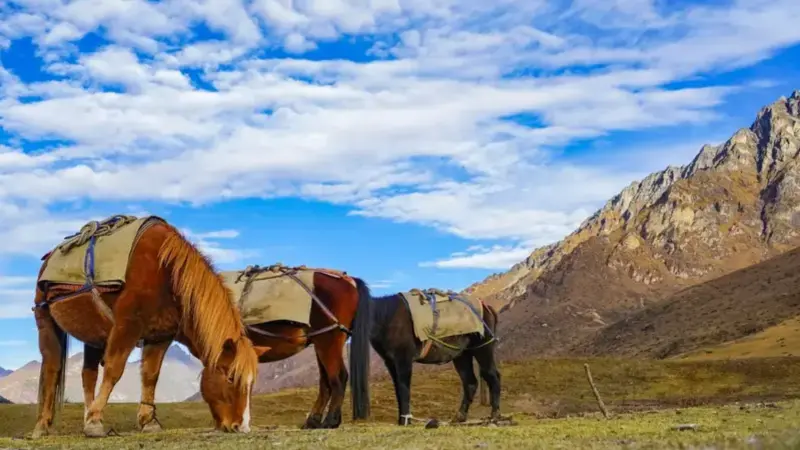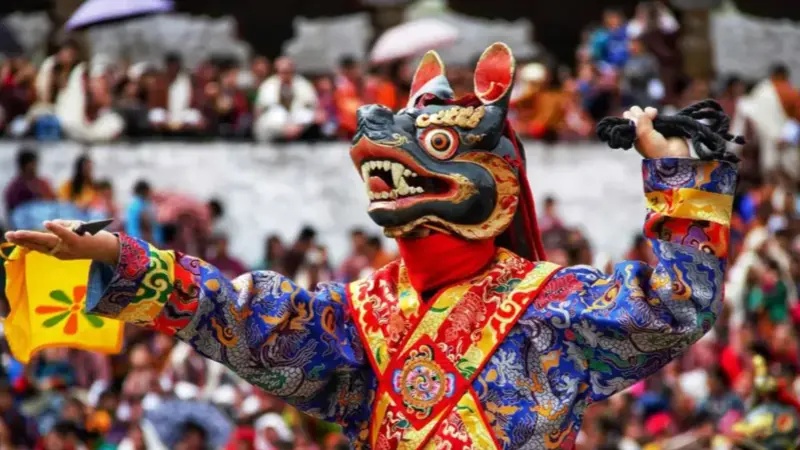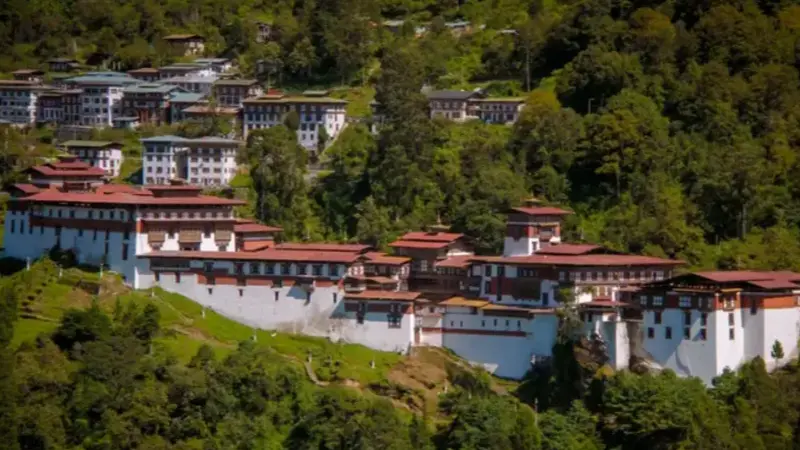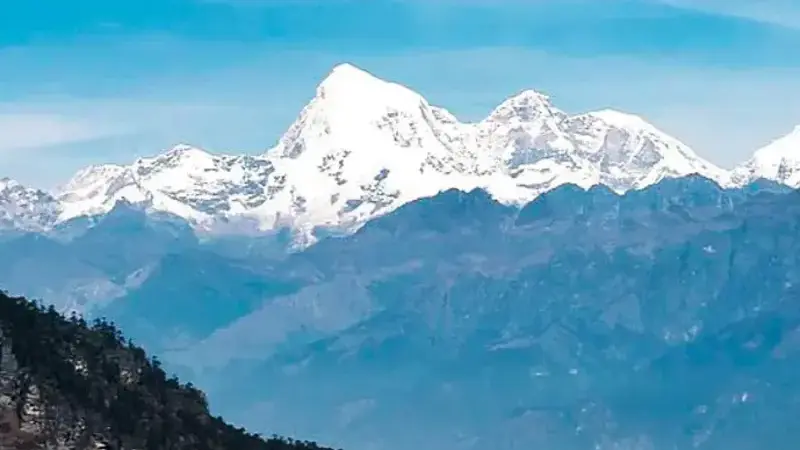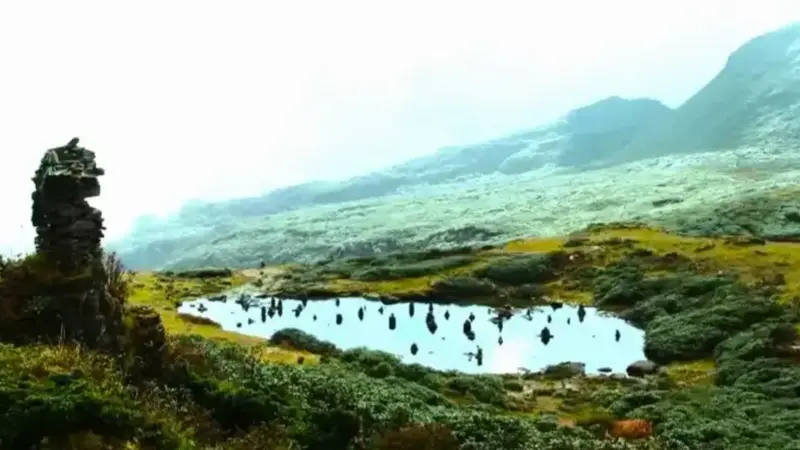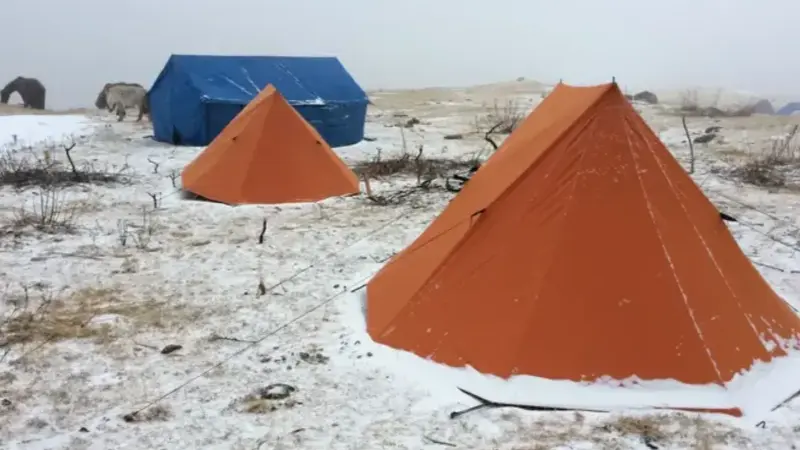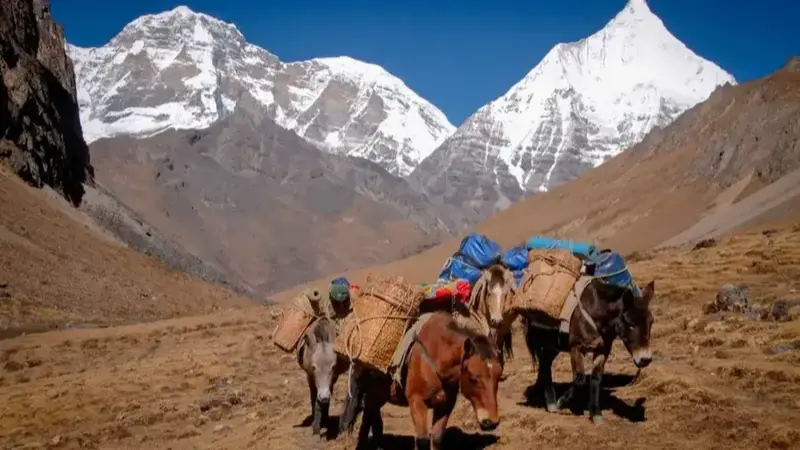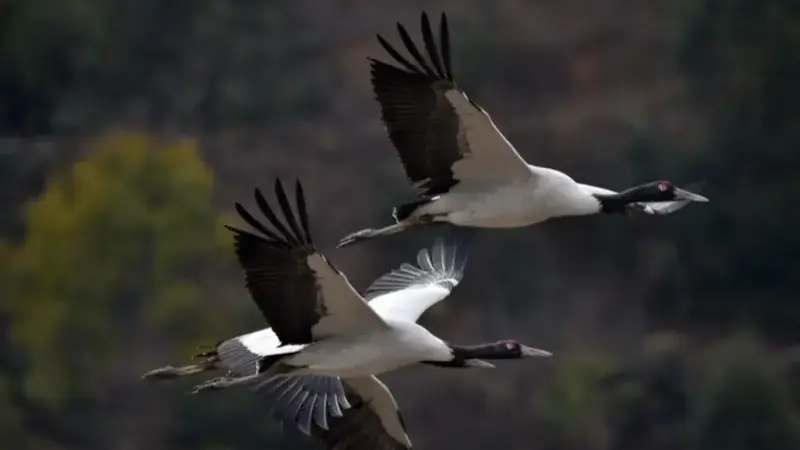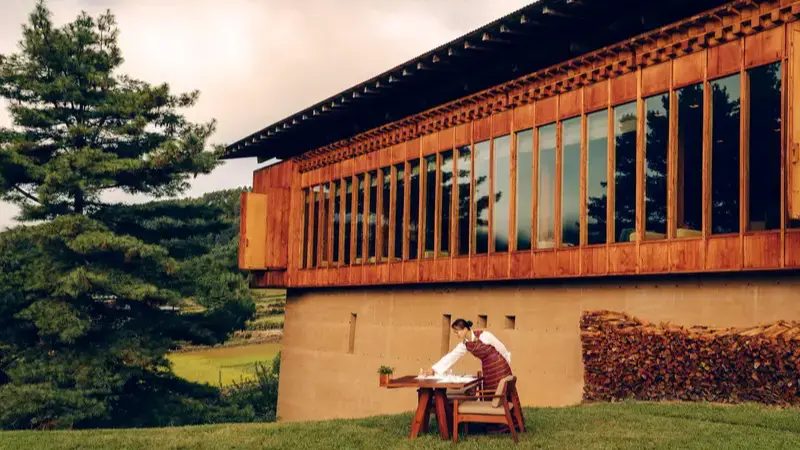Who was the Tigress of Paro Taktsang? [Unveiling the Mystery]
![Who was the Tigress of Paro Taktsang? [Unveiling the Mystery] - guru dorji drolo riding a tigress 1](https://foundbht.com/blog/uploads/guru-dorji-drolo-riding-a-tigress-1.webp)
Paro Taktsang, also known as the Tiger’s Nest Monastery, holds significant religious importance in Paro, Bhutan. Legend has it that Guru Rinpoche and his consort Khandro Yeshe Tshogyel blessed the site in the 8th century. While the monastery itself was constructed in 1692 under the reign of Bhutan's fourth civil ruler, Gyalse Tenzin Rabgye, it has been revered and consecrated by numerous esteemed Buddhist figures over the centuries following Guru Rinpoche.
Legend has it that Guru Rinpoche arrived at the site in the 8th century, riding atop a flying tigress. Over time, this tale of Guru Rinpoche and the flying tigress has evolved into various versions through oral traditions and narratives. Visitors to the site are often presented with a variety of stories and myths surrounding the legendary flying tigress.
Tales of the Flying Tigress: Myths and Legends at Paro Taktsang
- One rendition of the legend recounts Guru Rinpoche's transformation into Dorje Drolo, one of his eight manifestations, as he rode a flying tigress to the site. This tigress was believed to embody Khandro Yeshe Tshogyel, a Tibetan Princess and an emanation of Lhamo Yangchenma (Sarasvati). However, there is a contrasting version described by Trulku Thondup (1996), suggesting that Guru Rinpoche and Yeshe Tshogyel were already present at Paro Taktsang. According to this account, during their practice of Vajra Kilaya, Yeshe Tshogyel transformed into a tigress, becoming Guru Rinpoche's mount as he manifested as Dorje Drolo. This implies that the transformation occurred during their time at Paro Taktsang while engaging in the practice and attainment of Vajra Kilaya.
- It is also transmitted that Yeshe Tshogyel did the Vajra Kilaya practice at the cave of Sengephu in Taktshang.
- Another source suggests that Guru Rinpoche flew from Senge Dzong in Lhuntse to Taktsang in the form of Dorje Drolo riding on a tigress.
- Some accounts suggest that the entity embodying the flying tigress may actually be the manifestation of Monmo Tashi Kheudren, also known as Bumden Tshomo, rather than Yeshe Tshogyel. Tashi Kheudren was the daughter of Sendha Gyalp of Bumthang, who invited Guru Rinpoche to Bhutan in the 8th century. Guru Rinpoche took Tashi Kheudren as his spiritual consort for the tantric practice at Kurjey in Bumthang to subdue Shelging Karpo, the local deity – who is said to have caused illness to Sendha Gyalp. It was to help treat his incurable ailment that Sendha Gyalp had invited Guru Rinpoche.
- Karma Phuntsho (2013) also suggests that the flying tigress represents the manifestation of Tashi Kheudren. However, this Tashi Kheudren is different from the one previously mentioned. She is identified as the daughter of a local chief named Hangrey, likely from Bumthang or Kurtoe, rather than Sendha Gyalp. According to this account, Yeshe Tshogyel encountered Tashi Kheudren while meditating at Senge Dzong. Yeshe Tshogyel then took Tashi Kheudren as her disciple and introduced her to Padmasambhava at Taktsang (not Paro Taktsang). Recognizing Tashi Kheudren's spiritual qualities, Padmasambhava took her as his consort to engage in the esoteric practice of Vajrakilaya. Through their spiritual endeavors, it's believed that Padmasambhava transformed into Dorji Drolo, while Tashi Kheudren, having already attained profound spiritual realization, metamorphosed into a tigress.
Who was the tigress in the lair?
The answer to the above question is derived purely based on the biography of Yeshe Tshogyel written by Gyalwa Jangchub (also known as Atsara Sale was a consort of Yeshe Tshogyel from Nepal) and Namkhai Nyingpo, and later translated into English by Keith Dowman. The biography was concealed as a hidden treasure text in Lhorong, Kham. Taksham Nuden Dorji, also known as Samten Lingpa and believed to be the reincarnation of Gyalwa Jangchub, unveiled this biography as a terma text during the 18th century.
As per the biography, Yeshe Tshogyel initially travels to Bhutan from Tidro in Tibet. She had journeyed to Tidro to engage in meditation as directed by Guru Rinpoche at Samye. Guru Rinpoche instructed her to practice at Womphu Taktsang, Mon Taktsang, and Kham Taktsang, as well as at any other locations where there are naturally manifest images of Guru Rinpoche.
It is commonly believed that the existence of three Taktsangs has led to confusion over time, as oral or written narratives have intertwined events and stories associated with them. Consequently, many people mistakenly attribute events that occurred at other Taktsangs to the one located in Paro.
Yeshe Tshogyel, along with her consort Atsara Sale and a girl named Dewamo, arrives at Sengye Dzong in Lhuentse, Bhutan, from Tidro, Tibet. While engaging in her meditation and ascetic practices there, Yeshe Tshogyel is visited by a girl named Khyidren, who regularly brings her honey and milk. Khyidren happens to be the daughter of the local king named Hamrey. Yeshe Tshogyel requests the king to offer his thirteen-year-old daughter, who exhibits all the characteristics of a Dakini, to her.
Yeshe Tshogyel names the girl Tashi Chidren, meaning 'Fortunate Guide to Mankind', and brings her, along with others, from Senge Dzong to Taktsang.
According to oral traditions and certain written accounts, it's suggested that the Sengephu Cave at Paro Taktsang is where Yeshe Tshogyel practiced Vajra Kilaya (Phurpa). However, Yeshe Tshogyel herself clarifies that her practice there focused on 'the seed essence of co-incident pleasure and Emptiness', rather than Vajra Kilaya. Following months of intense practice, her physical form takes on the appearance of a sixteen-year-old maiden, and she transforms into Vajra Varahi.
During her time at Sengephu, Yeshe Tshogyel receives a vision of the Amitayus mandala (Tshepamed) and a prophecy predicting her lifespan to be 225 years. Subsequently, she and her companions proceed to Womphu Taktshang, where they meet Guru Rinpoche.
During their encounter at Womphu Taktshang, Guru Rinpoche foretells their reappearance in future: Guru himself as Pha Dampa Sangye and Yeshe Tshogyel as Machig Lapdron. He also prophesies that Atsara Sale would reappear as a monk and serve as a divine consort to Machig Labdron. Tashi Khyidren would be her sole daughter, while the Bhutanese boy named Sale would become her spiritual son. Additionally, Atsara Pelyang would manifest as a monk and become her mystical consort.
At Womphu Taktshang, Guru Rinpoche requests Yeshe Tshogyel to offer him with Tashi Chidren, who possesses all the characteristics of an Awareness Dakini (Vajrakarmaki). Tashi Chidren would then serve as his consort for the practice of Dorji Phurba (Vajra Kilaya). Yeshe Tshogyel offers Tashi Chidren to her Guru and prays that he reveal to her the tantric mysteries and to her, Yeshe Tshogyel, the secret instructions of Dorje Phurba.
Following this, Guru Rinpoche instructs Yeshe Tshogyel to journey to Uru in Central Tibet to seek out a 14-year-old boy who would become her tantric consort for their practice. Upon their return, Guru Rinpoche bestows the name Lhalung Pelgyi Sengye upon the boy. He would later be reborn as Lhalung Pelgyi Dorji and undertake the significant act of assassinating King Langdarma, who opposed the teachings of Buddhism.
Therefore, it was at Womphu Taktsang in Tibet, not Paro Taktsang in Bhutan, where Guru Rinpoche initiated the practice of Dorje Phurba (Vajra Kilaya) alongside his five primary spiritual sons: Lhalung Pelgyi Sengye, Namkhai Nyingpo, Ma Rinchen Chok, Dorje Dunjom, and Yeshe Tshogyel. Yeshe Tshogyel's four companions were also assigned roles in the initiatory rite of Dorje Phurba. Dewamo, renamed Chonema, assumed the role of Vajra hostess (Dorje Jenmo); Atsara Sale and Atsara Pelyang became Vajra Dancers (Dorje Gingpa), renamed Karma Dondup and Karma Tarje; the Bhutanese boy Sale was appointed Vajra Attendant (Vajrakarmaka); and Guru Rinpoche designated Yeshe Tshogyel as the 'root consort' and Tashi Khyidren as the 'liberating consort'.
After seven nights of practice, Guru Rinpoche and his two consorts achieved mastery in the Dorje Phurba practice, evidenced by various signs. These signs included the appearance of divine beings attending to Dorje Phurba and the dancing of ritual daggers imbued with fragrances. That evening, Guru Rinpoche himself transformed into Dorje Drolo, while Yeshe Tshogyel took on the form of Ekajati, also known as "The Crone with One Hair Knot." Together, they united in practice, with Tashi Khidren serving as their mount, manifested as a tigress. Their purpose was to subjugate the gods and demons across the microcosmic realms spanning the four quarters of Tibet.
Mounted on the transformed tigress, Khyidren, Guru Rinpoche and his spiritual partner, fully immersed in the samadhi of Dorje Phurba, projected numerous fierce and terrifying beings identical to himself.
One particular emanation, known as the Blue-black Vajra Wrathful Phurba (Tingnak Dorje Trophur), flew directly to Paro Taktsang. There, it subdued gods, demons, wrathful Dakinis, demon savages, and various spirits from the surrounding regions, including Bhutan, Nepal, India, and Lho. They were bound to serve the dharma.
Another emanation, named Purple Vajra Wrathful Phurba (Muknak Dorji Trophur), flew as far as the second Taktsang, located in Kham. It subjected gods, demons, demon savages, and spirits from Kham, Jang, China, and Hor to the same fate, binding them to serve the dharma and extracting their life-essence.
Hence, it is evident that the tigress, upon which Guru Rinpoche rides as Dorje Drolo, is indeed the Bhutanese girl Tashi Chidren. Yeshe Tshogyel transforms into Ekajati and unites with Dorje Drolo.
Moreover, it's apparent that this transformation of the trio into Dorje Drolo, Ekajati, and the tigress does not occur at Paro Taktsang, nor do they fly in from Sengye Dzong.
![Who was the Tigress of Paro Taktsang? [Unveiling the Mystery] - guru dorji drolo and khandro riding a tigress](https://foundbht.com/blog/uploads/guru-dorji-drolo-and-khandro-riding-a-tigress.webp)
In her biography, another mention of Yeshe Tshogyel's visit to Taktsang occurs before Guru Rinpoche departs for Ngayab Khandroling, the Land of the Dakinis. Guru Rinpoche instructs Yeshe Tshogyel to gather all his teachings to be concealed as terma and unveiled in the future. Alongside her, Guru Rinpoche's twenty-five foremost disciples document the teachings at Chimphu in Tibet and then accompany the Guru to conceal them. Initially, they journey to the three Taktsangs.
At Paro Taktsang, they disposed the treasures separately and left behind prophetic catalogs. The Guru prayed, "This is the place of Guru’s Mind. Whoever practices here will attain mahamudra siddhi. When the Guru resides in The Highest Paradise (Ogmin), these symbols of his Body, Speech, and Mind will spontaneously manifest." Following this, the Guru offered wish-granting prayers and bestowed blessings upon a naturally manifest stupa of Dorje Drolo, and the spontaneously manifest Six-syllable mantra.
Later on, they proceeded to Womphu Taktsang, recognized as the power place of Guru’s body, and to Kham Taktsang, designated as the power place of the Guru’s speech, where they concealed many treasures.
Around 804 AD, when Guru Rinpoche departs for Ngayab Khandroling, Yeshe Tshogyel, approximately 80 years old at the time, embarks on a journey to various sacred sites blessed by Guru Rinpoche for the remainder of her life.
During her final visit to Bhutan, there is no mention in the biography of her revisiting Taktsang. Instead, she initially travels to Senge Dzong. She also mentions visiting 'Phari Dzong in Bhutan.' She then identifies four additional locations in Bhutan where she spends a year each, concealing numerous treasure caches. These places are Gyelmo Mudo Jong, Lhamo Ngulkhang Jong, Gyellung Jokpo Lung, and Budum Lung.
References
- Karma Phuntsho (2013). The History of Bhutan, Noida and London: Random House India
- Keith Dowman (1996). Sky Dancer: The Secret Life and Songs of the Lady Yeshe Tshogyel, New York: Snow Lions Publication
- Sonam Kinga (2002). “This is the girl I need” in Speaking Statues, Flying Rocks, Thimphu: DSB Publications
- Tulku Thondup (1996). Masters of Meditation and Miracles, Boston and London: Shambala
More Reads...

Changyul Park: A Royal Gift to Thimphu’s Urban Transformation... Continue Reading...

Sacred Heights: Unraveling the Legend of The Tiger’s Nest Monastery... Continue Reading...
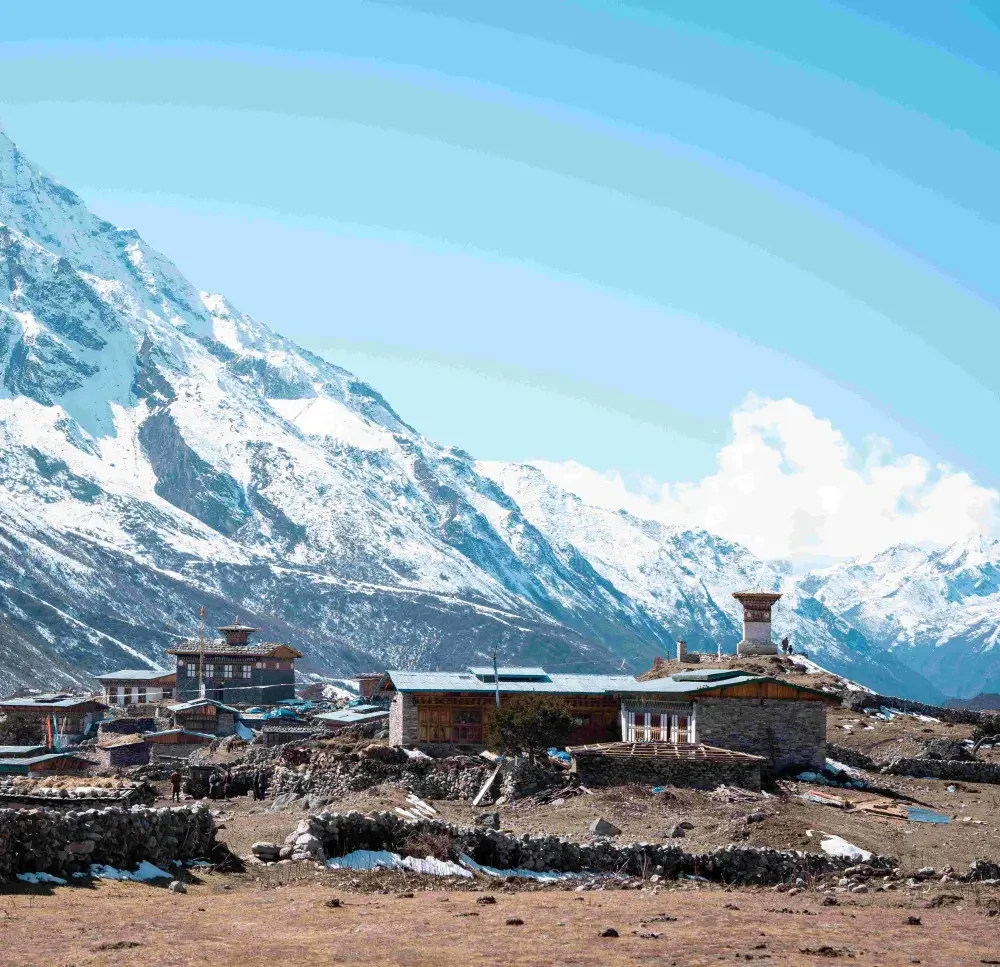
10 Must-Visit Places in Bhutan... Continue Reading...
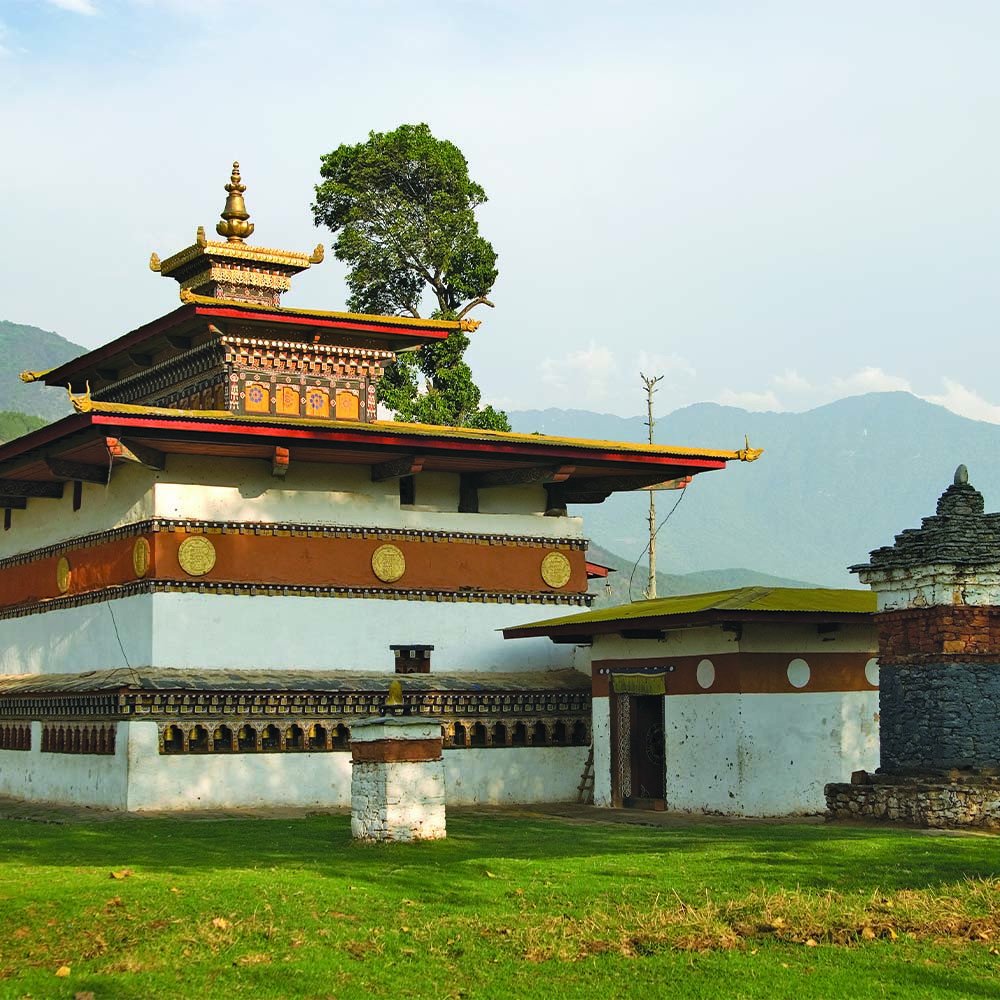
Chimi Lhakhang: The Fertility Temple of Bhutan... Continue Reading...

Punakha Dzong - A Virtual Tour through its Majestic Beauty & History... Continue Reading...

Connect with Ease
Contact our EXPERT team today & Customise your Bhutan Tour
Customize Your Bhutan Tour Today
Welcome to Found Bhutan, your gateway to exploring the enchanting beauty and cultural richness of Bhutan. Let us craft a bespoke journey tailored to your interests, ensuring an unforgettable experience amidst the breathtaking landscapes and timeless traditions of this Himalayan kingdom.
"Reach out today to design your tailor-made journey and begin your adventure of a lifetime."
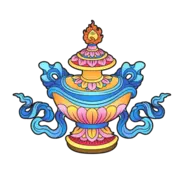
Mystical Bhutan
Tours of TRANQUILITY & TRADITION
Royal Highland Festival
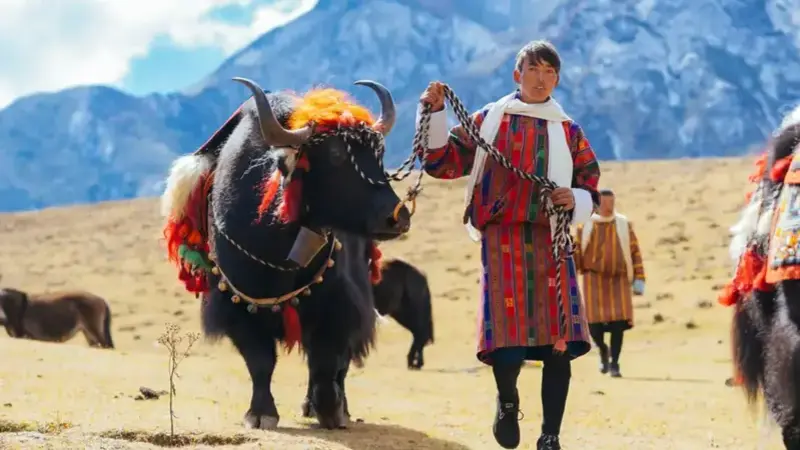
The Royal Highland Festival is a gateway to discovering Bhutan’s majestic highlands and experiencing its vibrant traditions.
Honeymoon Adventure

Bhutan Honeymoon Adventure isn't just a vacation, it's the beginning of a lifetime of love and adventures together.

